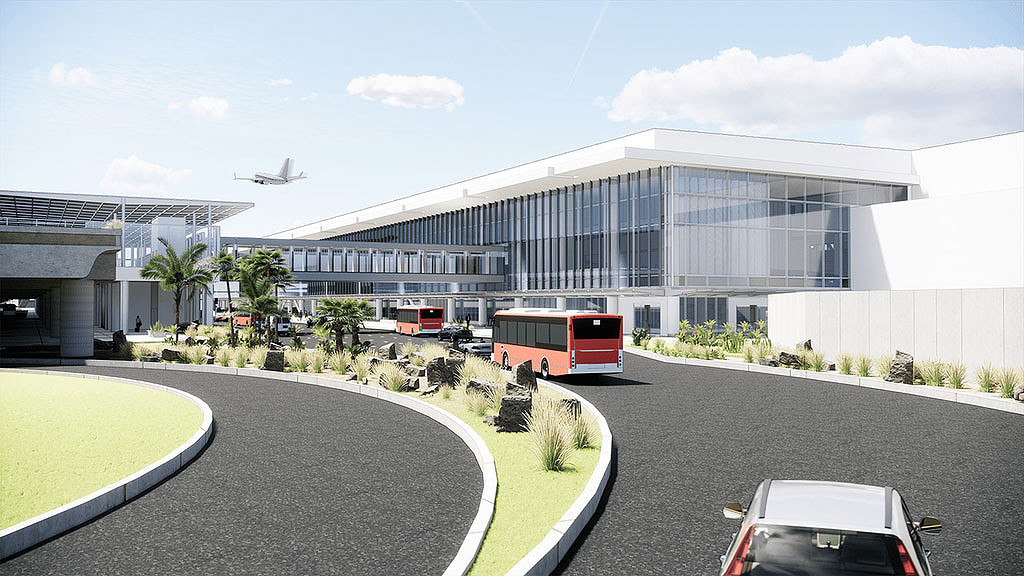Built to Last: Improving Our Airports With the Bipartisan Infrastructure Law
April 15, 2022 | By Derrick Choi
Last November, President Biden signed the $1.2 trillion Bipartisan Infrastructure Bill into law, roughly doubling the current infrastructure funding levels to give U.S. airports an unprecedented opportunity to make significant facility reinvestments for the future. With the appropriation of $25 billion of aviation infrastructure funds to be distributed over the next five years, $5 billion of this budget will replace aging passenger terminals and airport-owned air traffic control towers, enhance their energy efficiency, improve accessibility, and much more. Airport operators and sponsors have a chance to compete over five annual Federal Aviation Administration (FAA) funding cycles, starting with the initial application deadline this past March.
As we work with clients on preparing the requisite shovel-ready grant submissions for bidding, key design considerations stand out to meet the Airport Terminal Program (ATP) criteria:
- Improve airfield safety through terminal relocation. The relocation and site optimization of gate facilities may do more than just improve airfield safety and enhance the overall efficiency of aircraft movement on the airside. This can minimize pushback delays and improve ramp operations, among overall airside operations enhancements that will reduce airline inefficiency and boost customer satisfaction at the gate.
- Replace aging facilities. Airlines and municipalities built significant terminal facilities that ushered in the dawn of the Jet Age. Nearly half a century since the U.S. Airline Deregulation Act in 1978, we are seeing many of these facilities near the end of their useful life.
- Increase capacity and passenger access. With the rapid transformation in aircraft passenger capacity over the last half-century, many terminals were simply not built to handle the peak period seating demand of long-range next-generation aircraft, as well as accommodate the many current security and baggage screening modifications at airports that have evolved since 9/11. Furthermore, as we have all learned, the challenge of maintaining social distancing during airport peaks over the last two years has exacerbated the capacity constraints of many terminals.
- Encourage competition. By building back better with improved security checkpoints, gate hold rooms, and airside gate accommodations, among other enhancements, airports can provide a level playing field for all of their stakeholders, particularly competing air carriers who would be able to operate on a more even and high-performing platform.
- Improve energy efficiency. Building systems overhauls and LEED certification of projects are strongly encouraged in all grant applications to align with the FAA’s Airport Sustainability Master Plan initiative and Voluntary Airport Low-Emissions program.
- Expand access for persons with disabilities. Beyond meeting basic ADA Architectural Access Guidelines compliance, this is an unprecedented opportunity for airports with federal support to apply universal design guidelines to empower all users of airport terminals, regardless of whether they are customers or airport and airline staff.
- Improving airport access for historically disadvantaged populations. Expanding the conversation on universal access, the Bipartisan Infrastructure Law (BIL) funding program also presents project applicants with a unique opportunity to reimagine an equitable, safe, and inclusive transportation environment to welcome all users to the airport. Whether it be a language or accessibility barrier or a challenge to getting to work, airports have a chance to receive funding to tackle their unique inclusivity challenges to make the airport a better place to work and travel.
With the BIL criteria for next-generation air traffic control towers and terminals focusing on renewal, carbon neutrality, and resiliency, we are reminded that the most sustainable buildings should be built to last; a proposition that was challenged with many terminal facilities struggling to provide the flexibility required throughout the pandemic.
The Gensler aviation practice has been hard at work helping clients submit their BIL applications for this inaugural cycle, and we look forward to supporting other clients in preparation for the upcoming round of submissions in 2023.
For media inquiries, email .

